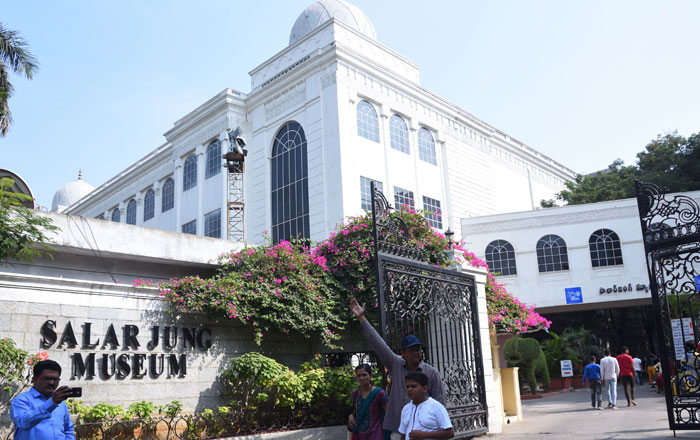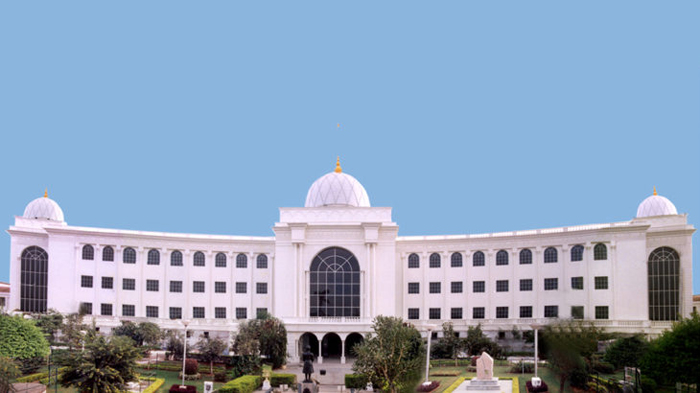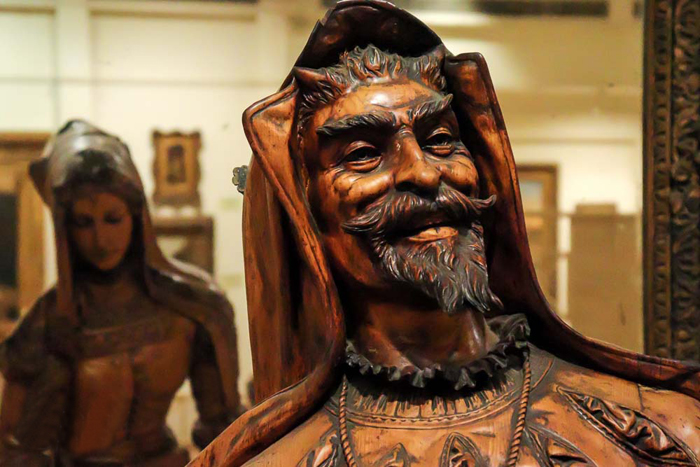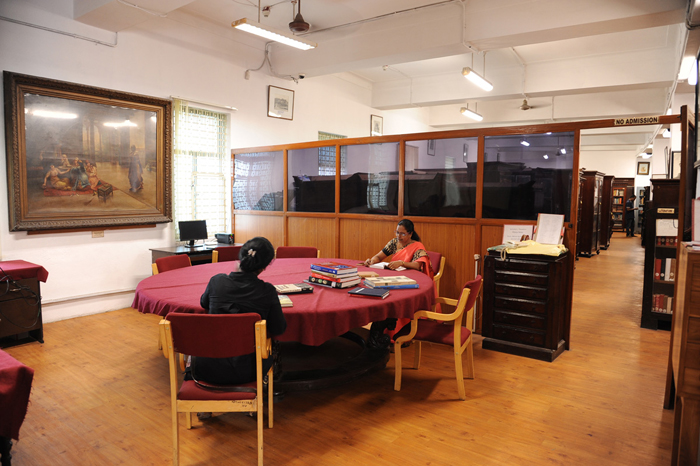Salar Jung Museum Hyderabad - Third Largest Art Museum in India.

The Salar Jung Museum is an art museum that is one of the three National Museums of India. The museum is located at Dar-ul-Shifa, on the southern bank of the Musi River in the city of Hyderabad, Telangana, India. It has a collection of sculptures, paintings, carvings, textiles, manuscripts, ceramics, metallic artifacts, carpets, clocks, and furniture from Japan, China, Burma, Nepal, India, Persia, Egypt, Europe, and North America. It is one of the largest museums in the world.

A nobleman of the Salar Jung family of Hyderabad, Nawab Mir Yousuf Ali Khan, Salar Jung III served as Prime Minister of Hyderabad during the Nizam's rule. He spent a substantial amount of his income, over a period thirty-five years, collecting artefacts from all across the world. Originally a private art collection of the Salar Jung family, it was endowed to the nation after the death of Salar Jung III. It was inaugurated by Jawaharlal Nehru on 16 December 1951. Old timers believe that the present collection constitutes only half of the original art wealth collected by the Nawab. Some more art pieces were lost or stolen during the shifting of the museum from Diwan Devdi to the present site. In 2003, the museum signed a memorandum of understanding with the National Mission for Manuscripts, and was declared a manuscript conservation centre. In 2006, a fire broke out in an auditorium in the museum premises. However, it was quickly extinguished and none of the artifacts were damaged. After the incident, fire safety facilities were upgraded.

The museum building, semicircular in shape with 38 galleries, spread on two floors, displays only a part of the original collection. The ground floor has 20 galleries and the first floor has 18 galleries. The exhibits on different subjects are displayed in separate galleries. Each gallery is huge and has many artifacts on display including ones dating back to the 4th century.
The "Founder's Gallery" houses portraits of Salar Jung III, as well as other members of the Salar Jung family.

The Indian block includes jade-crafted daggers of Jahangir, Nur Jahan and Shah Jahan and weapons belonging to Aurangzeb, Tipu Sultan, Muhammad Shah, Bahadur Shah and Abul Hasan Qutb Shah. Indian miniature paintings belonging to the Mughal, Rajasthani, Thanjavur and Deccan schools are displayed. Indian sculptures from the Gandhara and Chola periods are also displayed. The museum also has a collection of modern Indian artworks from the Bengal school. Works by Raja Ravi Varma, Abdur Rahman Chughtai, M.F. Hussain, K.K. Hebbar, Rabindranath Tagore, Abanidranath Tagore and Nandalal Bose are displayed.
.jpg)
The Western block is one of the most significant possessions of the museum is the sculpture of Veiled Rebecca by Italian sculptor Giovanni Maria Benzoni. It is one of four copies made by the sculptor. The other three are in various museums of the US. European Art from the British, French and Italian schools is displayed. Among the notable artists whose works are displayed are Canaletto, William-Adolphe Bouguereau and Francesco Hayez.
The Eastern block houses Japanese artworks, porcelain artifacts, samurai swords and sculptures from China, Japan, Tibet and Burma.
The museum has a famous Quran collection, from around the world in different fonts and designs, called the Quran Written with Gold and Silver. There are many more collections of religious books, as well as Arabic Quran.
The furniture collection includes pieces from the time of King Louis XIV and Napoleon. Salar Jung III collected about 43,000 artifacts and 50,000 books and manuscripts out of which only few are displayed in today's museum.

A variety and array of clocks greet the visitor in the clock room. There are ancient sundials in the form of obelisks to huge and modern clocks of the twentieth century. The Salar Jung Museum possesses a good number of clocks collected from different European countries such as France, England, Switzerland, Germany, Holland etc. The variety includes the Bird cage clocks, Bracket clocks, Grandfather clocks, Skeleton clocks, etc. The museum is also having some good examples of the clocks of the contemporary period of Louis XV, Louis XVI, and Napoleon 1st of France. The most important clock which attracts the greatest number of visitors everyday is however, a British Bracket clock. It has got a mechanical device by which a miniature toy figure comes out of an enclosure and strikes the gong and then returns to the enclosure at each hour.

Apart from the galleries, there is a reference Library, reading room, publication and education section, chemical conservation lab, sales counter, cafeteria etc.
The timings are from 10 am to 5 pm on all days except Fridays. The entry fee for Salarjung Museum is Rs 20 per person, while for students and children below 18 years of year, it is free. Students need to produce an identity card to avail free entry. For foreign tourists, the ticket price is Rs.500 per person. The facility of audio tour is also available. The fee for this approximately 90 minutes audio tour is Rs.60 per person. You can also click photos at the Salarjung Museum with a minimal camera fee. The fee for mobile and still camera is Rs.50.
Salar Jung Museum is easily accessible from Hyderabad bus stand, railway station and airport. You can also hire a cab service or auto rickshaws to reach Salarjung Museum. There is also the option of travelling by metro. The nearest metro station is M G B S Metro Station on the Red Line.
-
Hotel near Salar Jung Museum Hyderabad
- Hotel near Salar Jung Museum Hyderabad is Celebrity Resort (29.9, 1hr 29min).
 EN
EN